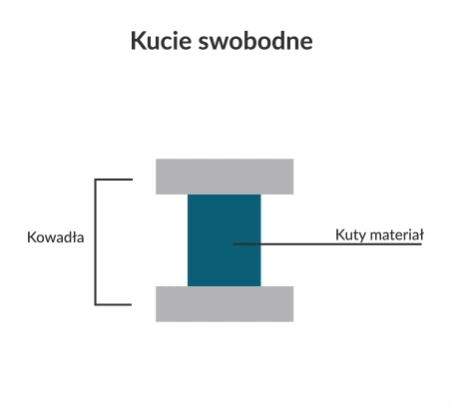Open die forging is the process of deforming a material by the pressure of a device or by the action of impact energy on a material that is not restricted by tools and can flow freely in all directions.
Open die forging is mainly used for small batch production or for very large and heavy forgings. This application of the technique is due to its limitations. These include low productivity and lower-quality forgings compared to other forging methods. It is also characterised by the generation of very large amounts of waste.

